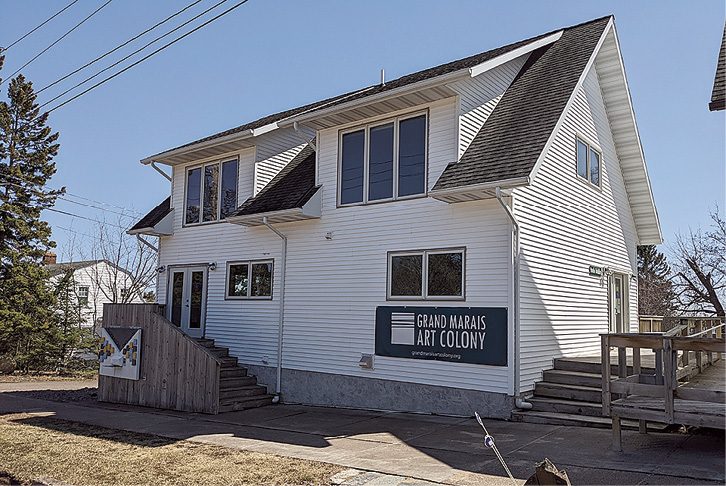This year marks the 75th anniversary of the Grand Marais Art Colony, the oldest art colony in Minnesota. For many years artists have been drawn to capturing this area’s natural beauty, and this summer brings a celebration of the Art Colony’s past and its growing future.
In the summer of 1947, artist Birney Quick started the Outdoor School of Painting in Grand Marais. Originally a summer program through the Minneapolis School of Art, in 1954 Quick was joined by artist and professor Byron Bradley, and together with other instructors they led summer art classes in Grand Marais until the early 1980s. During Quick and Bradley’s time, the Art Colony moved into the building that was formerly St. John’s Catholic Church, built in 1916.
“Birney was a plein air painter and Byron did sculpture, mixed media, painting and drawing,” said Art Colony director Lyla Brown. “Birney loved to paint and he also loved to have a good time, so they would have fish fries and people from the community would come meet up with the artists to hang out and have a good time.”
The 1980s and 90s brought new changes to the Art Colony. After Quick passed away in 1981, Bradley continued to operate the Art Colony until it became a 501(c) 3 nonprofit in 1984. Another turning point was the installation of a furnace in the building, enabling the Art Colony to move from being summer-focused to becoming a year-round operation. The Art Colony also partnered with other local organizations to help establish the Arrowhead Center for the Arts addition to ISD 166.
As the Art Colony has continued to draw artists to the North Shore, it has also needed to expand its facilities to allow for new opportunities. In 2005 a new studio building was constructed, which over the years has housed a print studio, staff offices, painting studios, ceramics, and lodging for student artists. Then in 2019, the buildings that formerly housed the North Shore Pharmacy and Dog Haus on Highway 61 were put up for sale and were purchased by the Art Colony in June 2019.
“Our studio building was becoming too small and we also wanted to increase visibility to the public,” Brown said. “Founders hall is also a great space for classrooms and for exhibitions, but you can’t have both going on at the same time. So, it was starting to become a bottle neck because we only had room for so many classes.”
Brown said that originally the plan had been to start looking for land within the city of Grand Marais to build a new building, but when the former pharmacy building came up for sale, they knew that commercial buildings didn’t come on the market very often, and that this was their chance to acquire a previously-built space with great visibility. Since the purchase, the Art Colony has been working on renovations, which they plan to have completed by June. The new spaces, Studio 17 and Studio 21, will house the printmaking studio, more classroom and exhibit space, accessible lodging space, and retail space.
This summer will bring a variety of 75th anniversary celebrations to the Art Colony. A historical timeline with artwork by Quick and Bradley will be on display June 10–August 27 in the original building. Meanwhile, Studio 21 will be hosting the 7-5 Exhibition, where seven artists from around the Great Lakes will display five works of art each. Community members, visitors, and anyone with ties to the Art Colony are also invited to participate in the Zine Project. A zine (pronounced zeen, short for magazine) is a self-published booklet, often with both text and images. According to the Art Colony’s website, “Zines are great tools for free speech, and anyone can make them no matter their age, artistic ability or location. This project invites you to express yourself with few boundaries.” Templates and instructions for the Zine Project can be found on the Art Colony’s website, or picked up at Studio 21, the Grand Marais Public Library, or Drury Lane Books.
More information about the Art Colony’s celebrations can be found at: grandmaraisartcolony.org.




